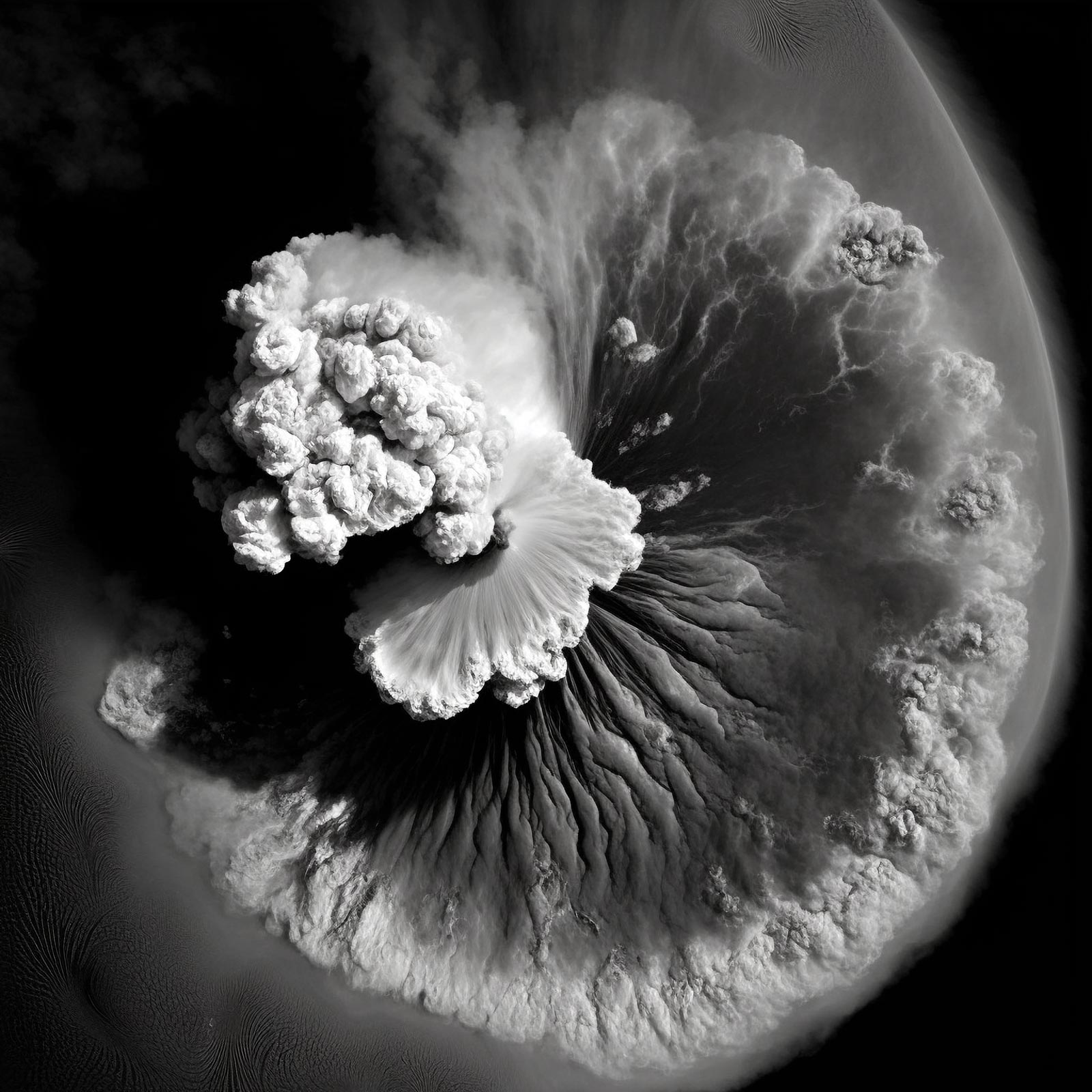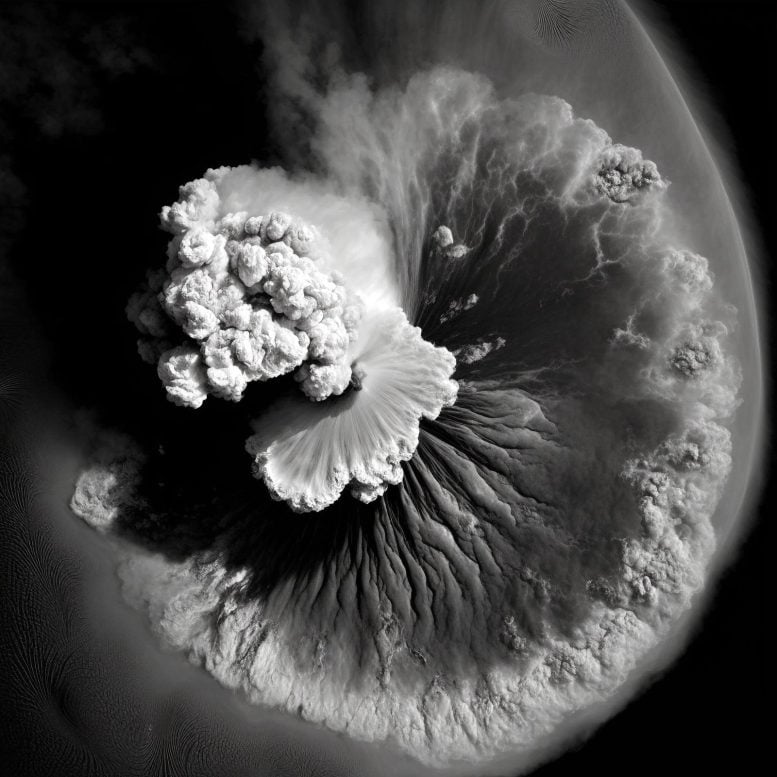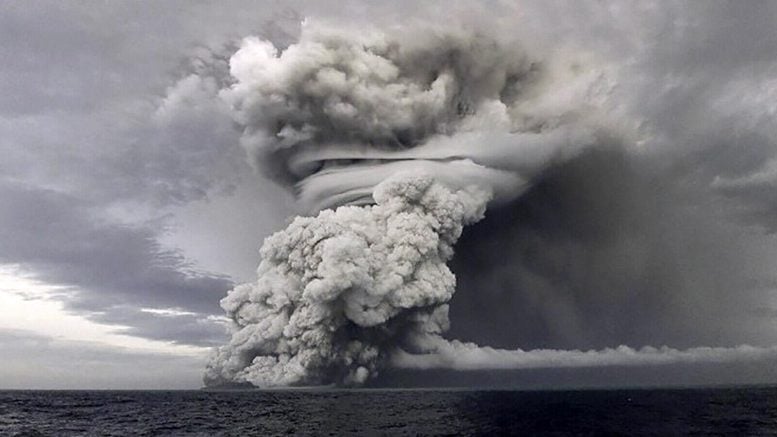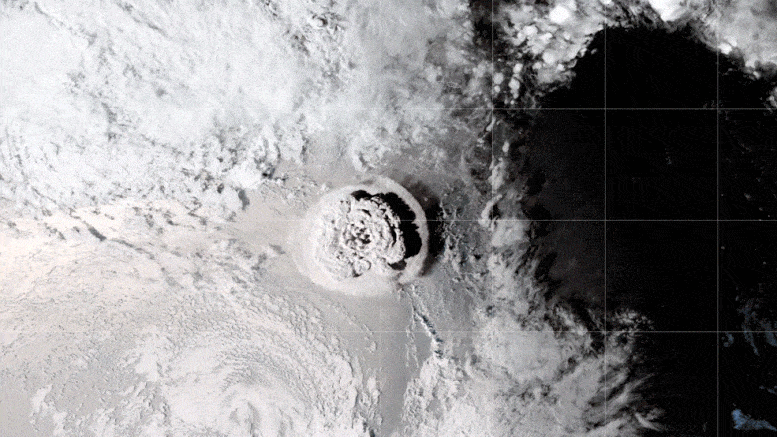

Two years after the massive Hunga Tonga underwater volcanic eruption, researchers have uncovered its primary trigger: an explosion likely caused by gas-compressed rock beneath the ocean.
This groundbreaking discovery challenges previous beliefs that such eruptions resulted from magma-seawater interactions and marks a significant advancement in volcanic research.
Hunga Tonga Eruption Trigger
The Hunga Tonga underwater volcano was one of the largest volcanic eruptions in history, and now, two years later, new research from The Australian National University (ANU) has revealed its main trigger.
Until now, the cause of the cataclysmic event has remained largely a mystery to the scientific community, yet a student-led team of ANU seismologists has been able to shed new light on the natural explosion that initiated the event.
The student researchers analyzed the climactic event’s noisy but valuable seismic records to decipher its mysterious physical mechanism.

Insights From Seismic Data
“Our findings confirm there was an explosion, possibly due to a gas-compressed rock, which released energy that equated to five of the largest underground nuclear explosions conducted by North Korea in 2017,” study co-author and ANU PhD student, Jinyin Hu, said.
“Our model suggests the event resulted from the gas-compressed rock being trapped underneath a shallow sea, like an overcooked pressure cooker.
“This would be surprising to many because it had been commonly thought that the interaction of hot magma with cold seawater caused such massive underwater volcanic eruptions.
“We used a technique previously developed to study underground explosions for this natural explosion.”

Environmental Impact of the Eruption
Study co-author, Dr. Thanh-Son Pham, said the explosion caused a massive vertical push of water upwards into the atmosphere, causing tsunamis that reached as high as 45 meters at nearby islands.
“The water volume that was uplifted during the event was huge. Based on our estimates, there was enough water to fill about one million standard Olympic-sized swimming pools,” Dr. Phạm said.
Professor Hrvoje Tkalčić, from ANU, study co-author added: “Using seismic waveform modeling, we observed a significant vertical force pointing upward during the event. At first, we were confused by it. But then we realized that the solid earth rebounded upwards after the water column got uplifted,” he said.

Advances in Volcanic Research
“A couple of weeks ago, we saw how seismology was used to explain an extraordinary sequence of events in Greenland that included a landslide due to glacial melting, a tsunami, and a seiche lasting for nine days observed globally.
“With Hunga Tonga, we have a relatively short-duration explosive event observed globally and, again, academically driven curiosity and forensic seismology at its best.”
According to the ANU seismologists, the Tonga eruption is the best instrumentally recorded event compared to events of similar sizes in the recent past.
“This is one of the largest events in our lifetime. Luckily, we had multiple ways to record the event, from data from satellite images to seismic sensors that record the sound waves and structure,” Mr Hu said.
“There was another event that happened in 1991 that was a similar size in Pinatubo in the Philippines, but back then, monitoring systems weren’t as sophisticated as they are now.”
Future Implications
The ANU seismologists believe that monitoring the release of gases and micro-seismicity from volcanic sites can help better prepare for future events.
The research is published in Geophysical Research Letters.
Reference: “A Composite Seismic Source Model for the First Major Event During the 2022 Hunga (Tonga) Volcanic Eruption” by Jinyin Hu, Thanh-Son Phạm and Hrvoje Tkalčić, 17 September 2024, Geophysical Research Letters.
DOI: 10.1029/2024GL109442